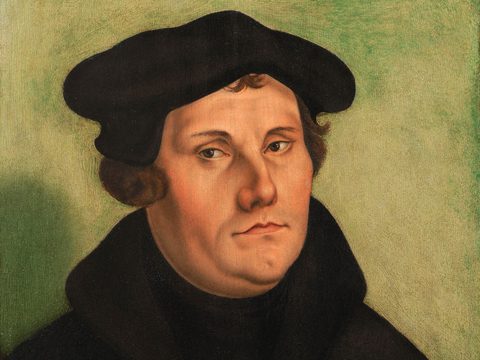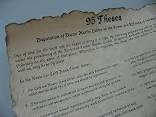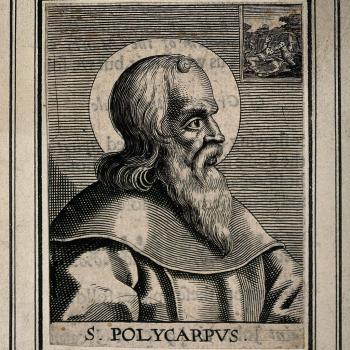This year will be the 500th anniversary of the Protestant Reformation. This Fall, it will be  a major celebration in Europe and much of the western world. A guy named Martin Luther started this protest movement against the Roman Catholic Church of the Holy Roman Empire that forever split the church. Yet Luther was a priest in this church.
a major celebration in Europe and much of the western world. A guy named Martin Luther started this protest movement against the Roman Catholic Church of the Holy Roman Empire that forever split the church. Yet Luther was a priest in this church.
Martin Luther has been one of the world’s most significant figures. He was born in 1483 in Eisleben, Saxony, in what is now Germany. Martin came from a Catholic family of ten. At thirteen years of age, he began attending a Catholic school in Magdeburg that was operated by The Brethren of the Common Life. That’s where young Martin learned personal piety and grew interested in the monastic life of his church.
But Martin Luther’s father was a successful businessmen who planned for his son Martin to be a lawyer. So, according to his father’s wishes, young Martin withdrew from the school at Magdeburg in 1501, enrolled in Germany’s most prestigious school, the University of Erfurt, and graduated from there with a Master’s degree in 1505.
In July that year, Martin Luther was caught in a violent rainstorm that threatened his life. He was struck by lightning bolt that knocked him to the ground. He immediately prayed earnestly that if God would spare his life, he would become a monk. Martin survived the ordeal without harm and kept his vow. Only days later, he enrolled in an Augustinian monastery. After that, Martin Luther always regarded that lightning bolt from the sky above as a sign sent from God. Likewise, twelve years later Mr. Martin Luther would become a metaphorical bolt of lightning to his church.
So, Martin Luther became an Augustinian priest. Yet he continued to study at the University of Erfurt in Wittenburg. In 1512, Martin achieved his doctorate and became a professor of biblical studies at his school. He remained in relative obscurity for the next five years, continuing his studies, teaching, and supposedly being a humble monk.
But on October 31, 1517, Martin Luther started the Protestant Reformation when he nailed a document that he had written to the door of the Wittenburg Catholic Church. Little known is the legend that he conceived of his pro testant plot while seated on the pot taking a, well, you know the rest.
testant plot while seated on the pot taking a, well, you know the rest.
During this period of time, the Bible was becoming known to the people for the first time. Back in about 1440, German Johannes Gutenberg had invented the printing press. In 1516, Dutch humanist scholar Erasmus used it to publish his compiled Greek New Testament, which later became known as Textus Receptus. This first publication of the Greek New Testament had a major impact on biblical studies, and no less on Martin Luther. He eventually translated the Bible into German using the second edition of Textus Receptus (1519) to translate his German New Testament, which was published in 1522. For nearly the next 400 years, Textus Receptus was the sole text in Protestantism for translating the New Testament into other languages.
Erasmus and Luther were the two most influential Catholic scholars of their time, and they had similar upbringings. Both learned Latin and Greek at young ages. Both soon learned to appreciate piety and the necessity of a personal relationship with God from being schooled by The Brethren of the Common Life.
But the direction of the lives of Erasmus and Luther were the opposite respecting the Church (=RCC). Although both objected to its clerical abuses such as indulgences, with which Luther really launched his revolution, Erasmus always remained faithful to the Church, trying to affect positive change from within.
For instance, Erasmus always said he never disagreed with the Church’s doctrinal teaching. He even affirmed its transubstantiation teaching of the Eucharist, with which Luther strongly disagreed. And Erasmus never spoke ill publicly of Catholic clergy.
Luther, on the other hand, often identified Catholic popes, or the papacy itself, as “the beast” or “Antichrist” depicted in the book of Revelation in the New Testament. And Luther characterized the Roman Catholic Church as “Babylon the Great, mother of harlots and abominations of the earth” (Rev. 17.5). This is somewhat understandable since, when Luther started his rupture with the Church, its officials often directed their Inquisitors of Inquisition fame to try to capture Martin Luther so the Church could try him before a court and get him executed. Thus, during those early years Martin Luther was sometimes on the run, with his friends protecting him.
In contrast, Erasmus dedicated Textus Receptus to Pope Leo X, calling him a “patron of learning.” Luther fully embraced Augustine’s two main teachings: (1) the centrality of the Bible, and (2) humans cannot achieve salvation by their works, but only by God’s grace that he interpreted as unconditional predestination of people.
Thus, in 1526 Luther wrote to Erasmus, his elder by seventeen years, declaring, “free will does not exist.” That’s because Erasmus had always endorsed free will as taught by the Church. This, and Erasmus’ refusal to join the Lutheran wing of the Protestant Reformation, angered Luther and caused him to write one of his primary works–On the Bondage of the Will. In this book, Luther even declares that Erasmus is not a Christian. Yet Erasmus respected Luther, once calling him “a mighty trumpet of gospel truth.” And Luther admired Erasmus’ for his prestigious knowledge. Erasmus was known for his religious toleration, whereas Luther created a firestorm wherever he went. Maybe it was due to that lightning bolt that struck him.
Luther’s “95 Theses” consisted of 95 points, sometimes arranged as questions rather than being accusatory. The main thrust of this document was to criticize the Church for abusing indulgences. Luther’s main contention was that God’s salvation comes through repentance and faith alone, thus not through good works as the Church taught. In fact, when Luther translated his German New Testament, he added the word “alone” after the Apostle Paul’s word “faith” in the book of Romans that reads, “For we hold that a person is justified by faith apart from works prescribed by the law” (Romans 2.28). This was one of Martin’s favorite Bible texts he cited in support of justification by faith.
This was the primary doctrine of the Protestant Reformation–salvation by faith alone. But there was controversy, especially from the Roman Catholic Church, that true faith must be accompanied by works of righteousness or else it isn’t true faith. The primary biblical support for this assertion is by Jesus’ brother James. He writes, “a person is justified by works, and not by faith alone” (James 2.24; some versions translate monon “only”). In this case, the word “alone” is in the Greek text. James adds, “faith without works is dead” (v. 26). Since Martin Luther could not reconcile his view of “works” in Romans with what James says here, Luther deemed this letter of James “a right strawy epistle.” He also suggested that maybe it should not be in the canon.
This controversy–about how to receive God’s salvation–was highly disputed between Protestants and Catholics for centuries. Protestants generally understood the biblical expression “works of the law,” which appears six times in Paul’s two letters to the Roman and Galatian believers, as righteous acts. But during the twentieth century, these two foremost Christian bodies entered into years of dialogue meetings. Surprisingly, the outcome was peace. A document was signed between them admitting fault on both sides and that they now agree about how to obtain salvation.
Plus, a new scholastic viewpoint has risen in recent decades called The New Perspective on Paul. It alleges that the Apostle Paul has been misunderstood regarding his use of the expression “works of the law.” I think these scholars are convincing in claiming that Paul does not always use the word “works” in the same manner. They contend that he often uses it to refer to rituals in Judaism, such as male circumcision, animal sacrifices, and treating certain days as holy, just as Paul says in his Galatians letter. Accordingly, that is what Paul means by writing, “we know that a person is justified not by the works of the law but through faith in Jesus Christ” (Galatians 2.16).
With this understanding, Paul does not disagree with James at all. In fact, along with all of Paul’s teaching about the works of the law, he also says those who are justified by faith will live by the Spirit (e.g., Romans 8.4, 9). Paul cuts off the argument that his teaching encourages antinomianism. For he says, “Now the works of the flesh are obvious: fornication, impurity, licentiousness, idolatry, sorcery, enmities,” etc., “those who do such things will not inherit the kingdom of God ” (Galatians 5.19-21). He says rather that such people “have fallen away from grace” (v. 4). Paul adds, “the only thing that counts is faith working through love” v. 5).
Several of Luther’s 95 Theses are about the misuse of indulgences by Catholic clerics. That was the primary reason he pounded his nail into the door at Wittenburg. Indulgences were money payments people made to the Church in order for its clerics to forgive certain confessed sins they had committed. Yes, the Church actually sunk that low. Vatican II has helped a lot, but apparently the Church still has not totally revived.
This week, I was eating lunch at a restaurant, sitting outside in Phoenix, Arizona, enjoying the warm sunshine. Two students from a Roman Catholic high school near my home walked up, stopped, and asked me if they could ask me some questions and videotape it for a school project. I assented. They did a good job, asking questions that included some theology. One was that they asked how I felt about the Catholic Church providing salvation. I answered that I believe the Church can’t do that but can truthfully tell us how to obtain salvation, which is by believing in Jesus dying for our sins on the cross. Of course, the Catholic Church is most well known for its focus on physical crucifixes, symbolizing Jesus death on the cross. Many Catholics wear one on a chain around their necks. When I said that, the faces of these students–a Caucasian boy and an Asian girl–became joyfully animated. Then both of them said they thought that was an interesting perspective. All of this was being taped for their class to watch.
That is what Martin Luther would have told these students, and it’s in his 95 Theses.













